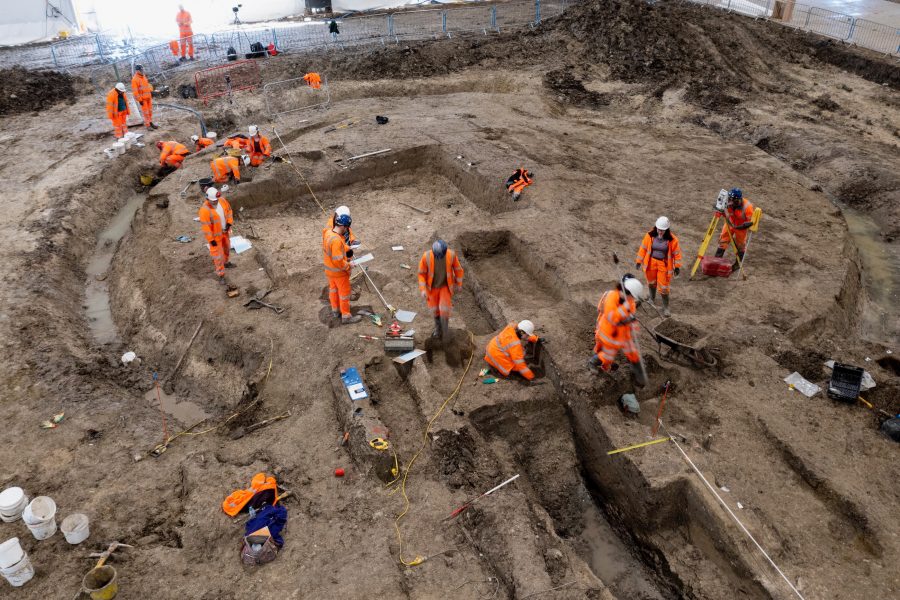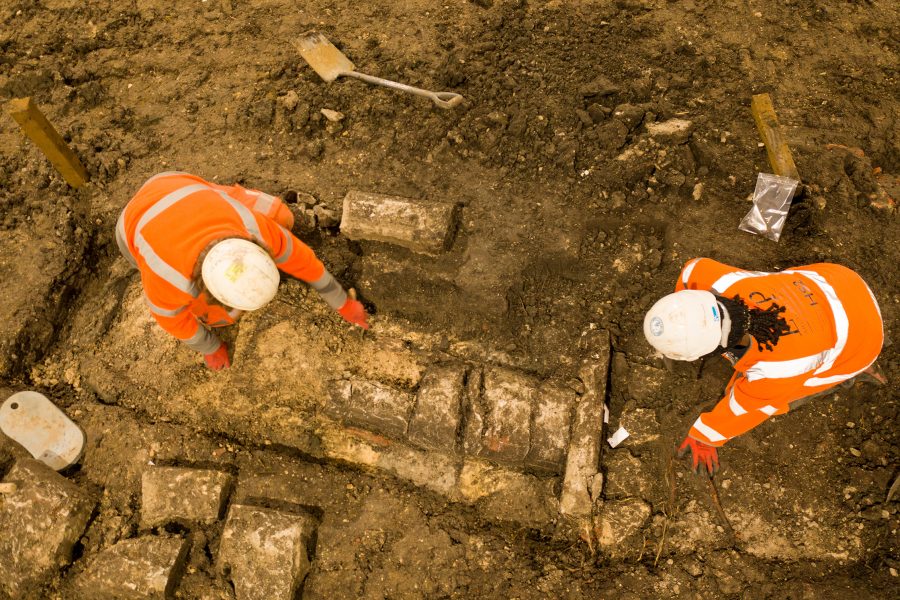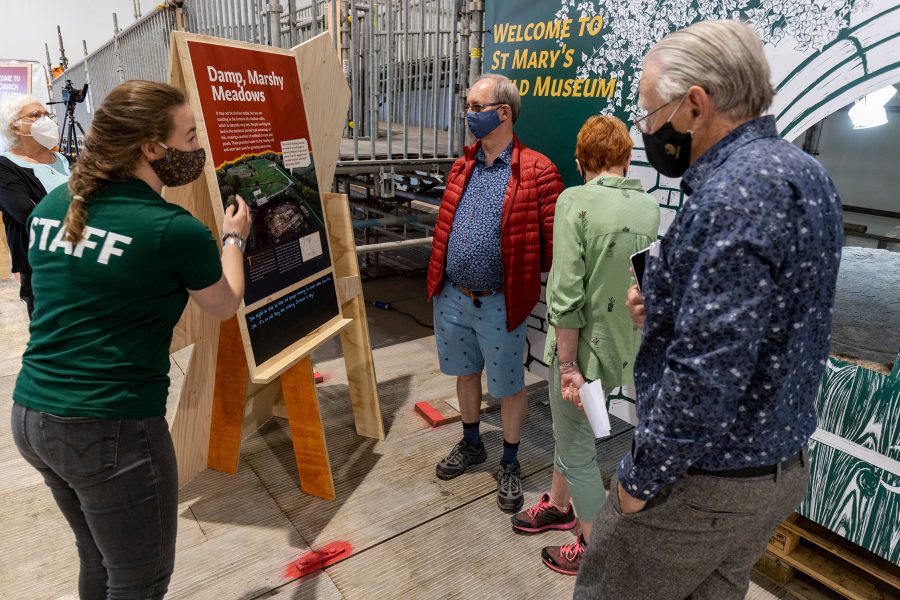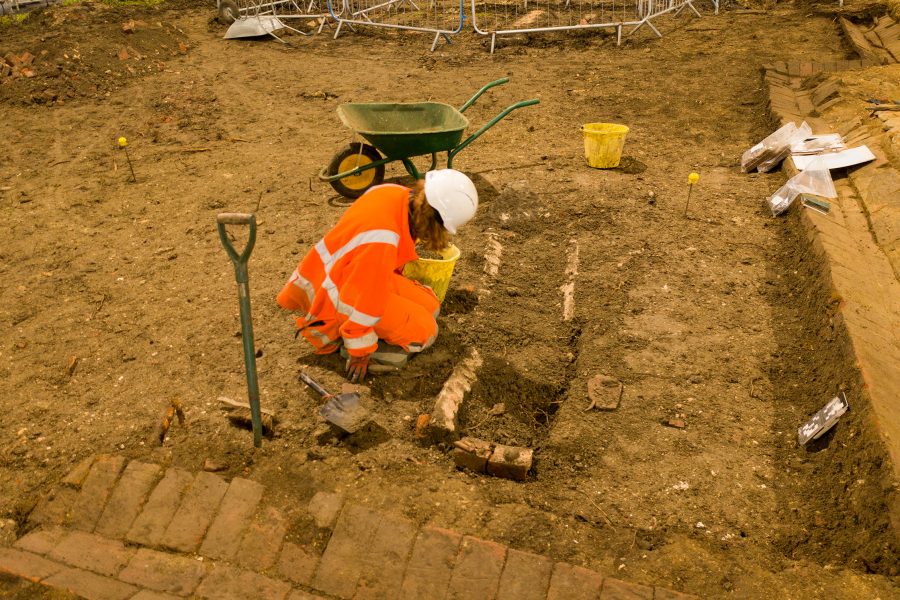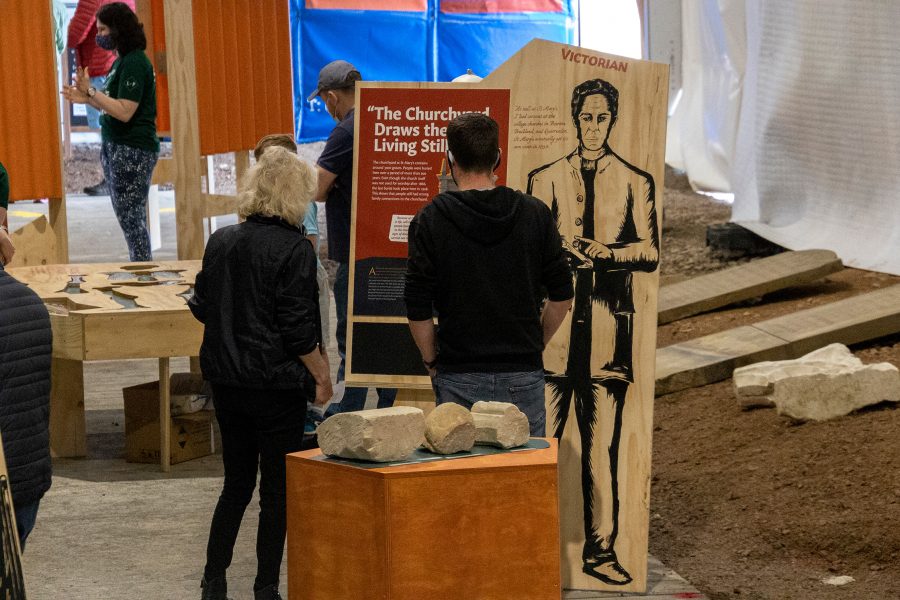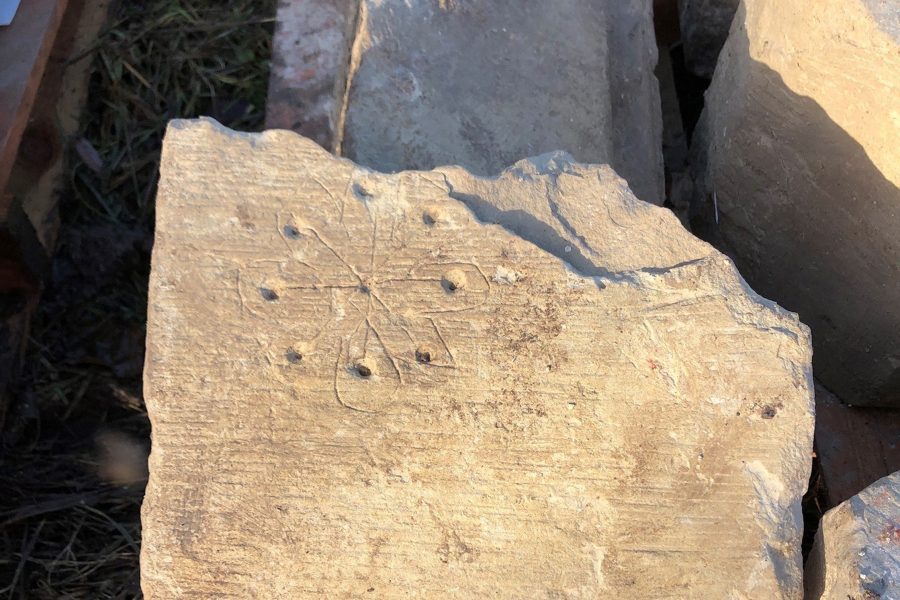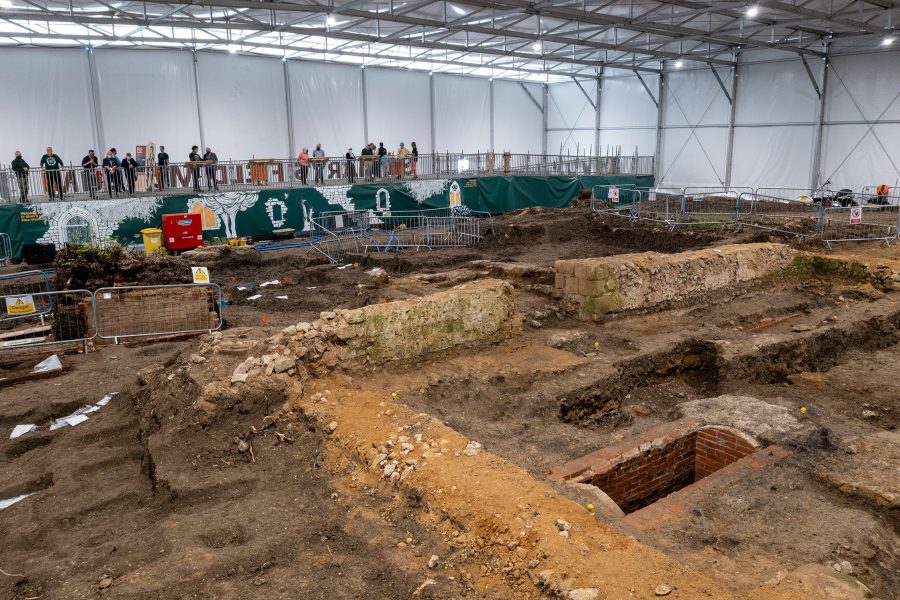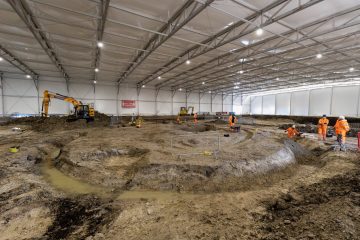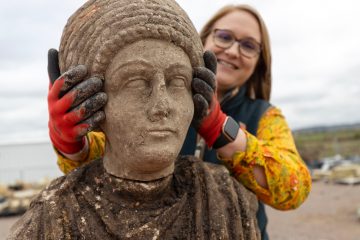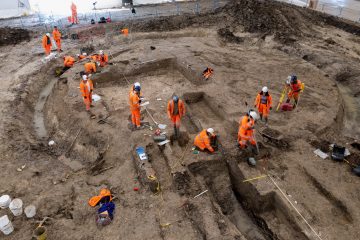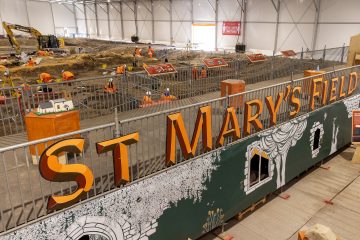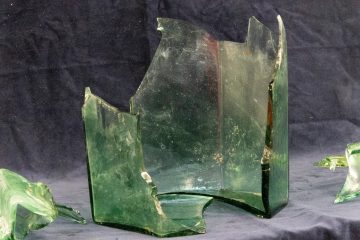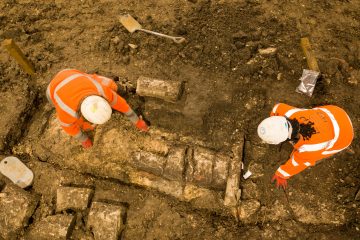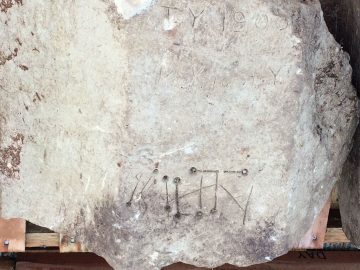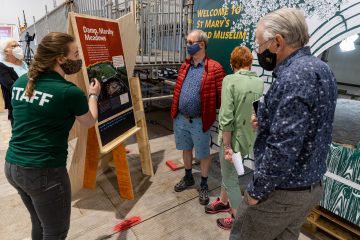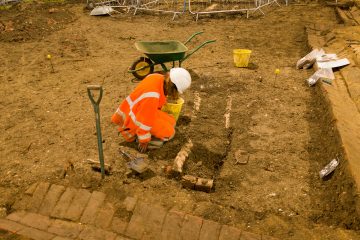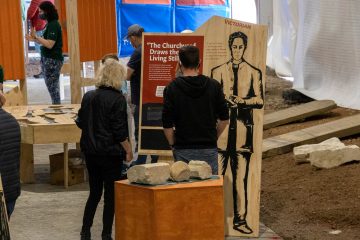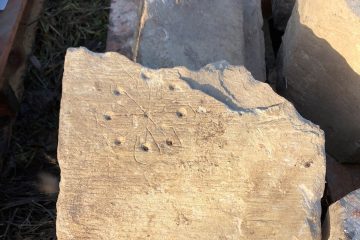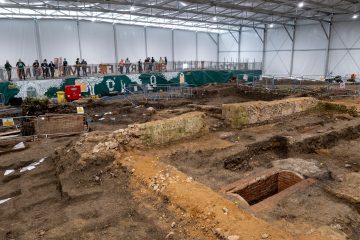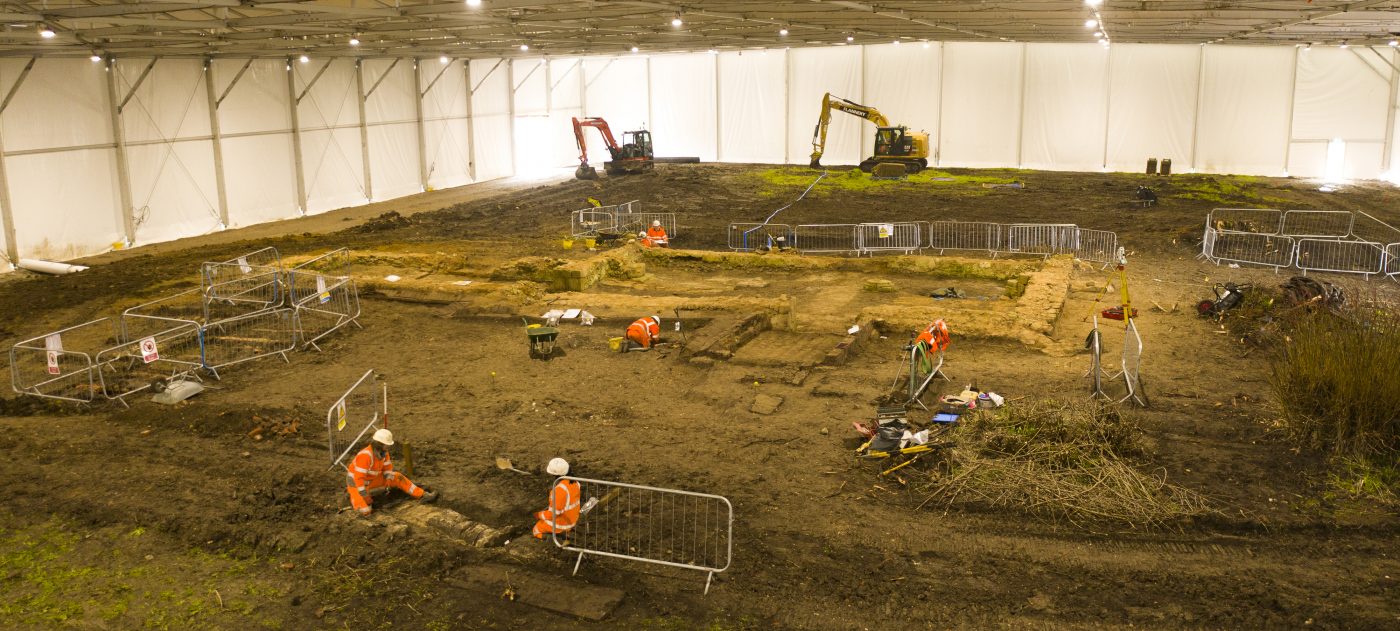
St Mary’s Church
During excavation work in Stoke Mandeville, our archaeologists have found the remains of a Norman church with some other unusual discoveries. A wealth of incredible finds have been discovered, including a set of incredible rare Roman statues.
Uncovering the site
The church was built shortly after the Norman Conquest, and may at first have been the private chapel belonging to the lord of the manor at that time. However, it went out of use in the 1880s when the new St Mary’s Church was built closer to the centre of the village. The St Mary’s site is unique and the HS2 scheme is providing a rare opportunity to excavate and understand the history of this building, how its use and meaning changed over time and what it meant to the community of Stoke Mandeville.
It went through many renovations over the years which include the extension of the chancel in the 13th century, the addition of the south aisle in the 14th century, and the construction of the brick bell tower in the 17th century. These new additions seem to mark a transition from a chapel used for private prayer to a church that was used by the local villagers.
Following the construction of the new church in the centre of the village, the old St Mary’s fell into disrepair as maintenance of the building declined. By 1966 the building was considered dangerous, so the Royal Engineers were brought in to demolish it. Over the next 50 years the rubble pile left became overgrown with vegetation, blending into the surrounding greenery, meaning newcomers to the area may have been unaware of the existence of the church building there previously.
The burial ground at St Mary’s was in use for 900 years, with the last recorded interment in 1908. The team of 40 archaeologists working on the site will be able to construct a picture of the role of St Mary’s in the local community from its construction in the 11th century through to its decline in the late 19th century.
During excavations, archaeologists on the site have also discovered some unusual stone carvings, medieval graffiti and other markings. Two stones have a central drilled hole from which a series of lines radiate in a circle. Historians consider these markings to be ‘witches’ marks, created to ward off evil spirits by entrapping them in an endless line of maze. There are several well-known examples of these across Britain both in churches as well as houses and sometimes even on furniture.
However, they can also be interpreted as early sun dials, used by the church to divide up the day into morning prayer, midday prayer and evening prayer. These ‘scratch dials’ as they are known, are usually found close to the southern door of the church as it a position better suited for a sun dial.
In the final stages of the excavation at the site of the old St Mary’s Norman church in Stoke Mandeville, archaeologists were excavating a circular ditch around what was thought to be the foundations of an Anglo-Saxon tower. As they dug down, they uncovered three stone busts which are stylistically Roman. Two of the busts comprise of a head and torso which had been split before deposition, and the other just the head. The two complete statues appear to be one female adult and one male adult, with an additional head of a child.
In addition to the statues, an incredibly well-preserved hexagonal glass Roman jug was also discovered. Despite being in the ground for what is thought to be over 1,000 years, the glass jug had large pieces still intact. Archaeologists working at the site were able to remove what they believe to be almost all of the fragments. The team can only find one comparison for this, a completely intact vessel which is currently on display in the Metropolitan Museum of Art, New York. Other finds include large roof tiles, painted wall plaster, and Roman cremation urns.


